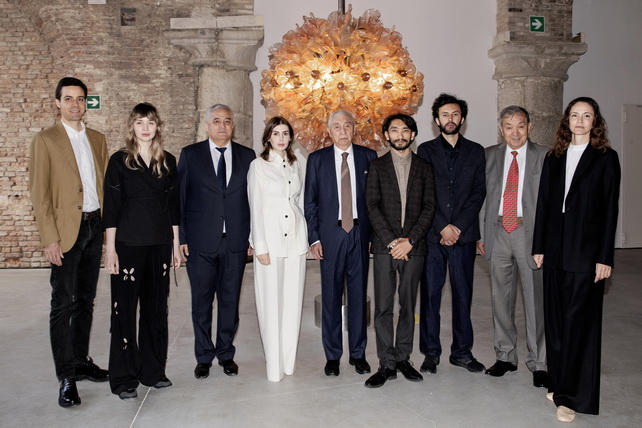
Uzbekistan presents "A Matter of Radiance" exhibition at the 19th International Architecture Biennale in Venice
Uzbekistan presents "A Matter of Radiance" exhibition at the 19th International Architecture Biennale in Venice
Tashkent, Uzbekistan (UzDaily.com) — Uzbekistan’s national pavilion at the 19th International Architecture Exhibition – La Biennale di Venezia will open with the presentation of A Matter of Radiance, a project organized by the Art and Culture Development Foundation of Uzbekistan (ACDF).
The initiative, launched by ACDF Chair Gayane Umerova, is curated by the architecture studio GRACE, led by Ekaterina Golovatyuk and Giacomo Cantoni.
The exhibition explores a unique architectural and scientific site — the Institute of Solar Materials, built in 1987 near Tashkent. Today, the institute is viewed as a significant legacy of Soviet modernism and, simultaneously, a potential international scientific platform that reflects Uzbekistan’s commitment to a sustainable future.
The Institute of the Sun: Between Science and Culture
The former solar heliocomplex, one of the last major research projects of the USSR, remains one of only two operational solar furnaces in the world capable of reaching extreme temperatures. Though the facility’s primary function was used for less than five years, the exhibition presents nearly four decades of reinterpretation, highlighting its relevance to science, ecology, and architecture.
Gayane Umerova, Chair of ACDF, remarked: “The pavilion reflects not only our commitment to architectural heritage but also the country’s strategic direction toward environmental sustainability. Uzbekistan has declared 2025 the Year of Environmental Protection and the Green Economy. We aim to foster a dialogue about a future where architecture, science, and culture shape a shared vision.”
The Exhibition and Artistic Interpretations
The exhibition includes physical elements transported from the Institute of the Sun: a heliostat, facade components, interior pieces, and other artifacts, some of which have been reconstructed. These objects emphasize the architectural complexity of the site and its potential as a space for scientific imagination.
A central visual focus of the pavilion is a photographic series by Armin Linke, commissioned specifically for the project. Displayed on tripods formerly used in mirror testing, the photographs capture architectural and technological details of the complex, placing them within a broader social context.
The pavilion continues the research initiative Tashkent Modernism XX/XXI, launched in 2021 to document and preserve the modernist architecture of Uzbekistan’s capital. Thanks to the efforts of the GRACE team and ACDF support, 21 buildings have already been granted national heritage status.
Participants and Artistic Projects
Leading figures from Uzbekistan’s contemporary art and science scene are contributing to the project:
A video installation titled Palace of the Sun by Azamat Abbasov uses point cloud technology to explore the spatial and symbolic dimensions of the complex, expanding its meaning beyond architecture.
Esther Sheinfeld presents the installations Place of Power and Radiance of the Axis of Time, inspired by the daily scientific routine and the symbolism of solar energy. The pieces are arranged around a central beam of light, shining onto Petri dishes laid out in the shape of an ancient solar emblem.
Mukhidin Riskiyev contributes a ceramic work titled Nur (“Light”), fired using the solar furnace. The installation will serve as scenography for a production by the Ilkhom Theatre of Tashkent, interpreting the myth of the sun’s rebirth.
Founded in 1976, the Ilkhom Theatre remains an independent cultural institution and will present an original stage interpretation of the exhibition’s themes.
Catalogue and Public Program
The exhibition catalogue, published by Marsilio Editori, includes interviews with Rustam Azimov — son of academician Sadyk Azimov — as well as physicists Odilakhodja Parpiev and Sultan Suleymanov. The publication sheds light on the scientific and cultural importance of the Institute of the Sun.
A working solar furnace transported from Parkent district will be installed in front of the pavilion. A series of public events involving architects and scientists is planned during the Biennale, including a special session at Palazzo Van Axel in May 2025.
Exhibition Dates: 10 May –23 November 2025